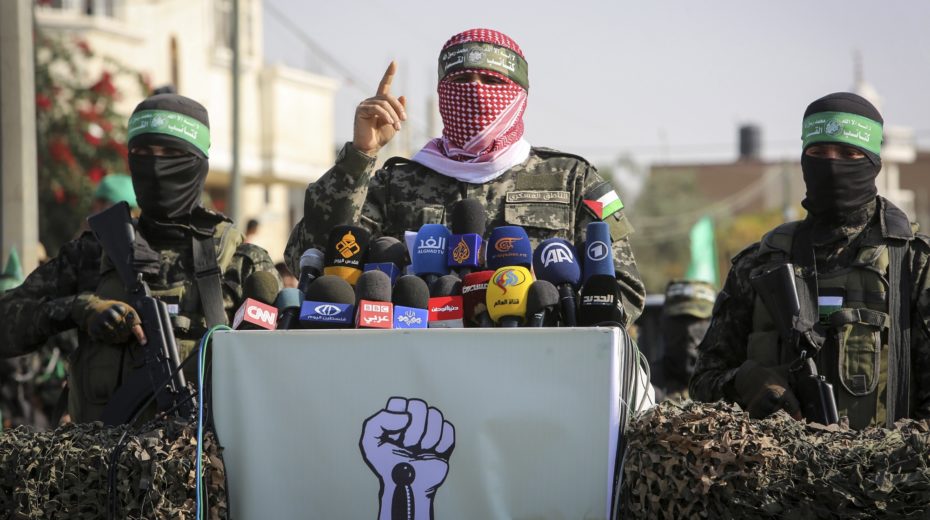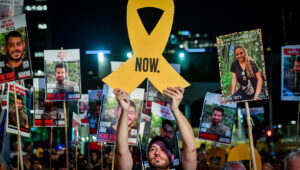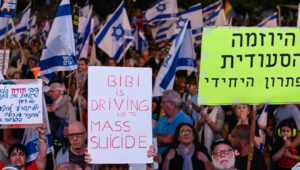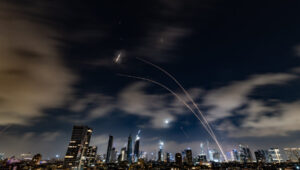As of the writing of this analysis, more than 200 rockets have been fired from Gaza into Israeli cities in the south and center of the country on Tuesday and into the morning hours Wednesday.
The heavy rocket barrage began after the Israel Air Force, using a Rafael produced Munice Spice-1000 missile, assassinated one of the most dangerous terrorists working on Israel’s destruction in Gaza on Monday night.
Baha Abu Al-Ata, the commander of Palestinian Islamic Jihad (PIJ) in Gaza, had been on Israel’s hit list for more than ten years while he survived three earlier assassination attempts by Israel.
The decision to kill Al-Ata was taken more than a week ago but the Israeli military waited for an opportunity to execute the assassination until the top terrorist wasn’t surrounded by human shields.
The decision to eliminate Al-Ata was taken after Israeli intelligence delivered information on an impending large PIJ operation against Israel Goria Eiland, the former head of Israel’s National Security Council, told Israel Today during a telephone interview.
Eiland confirmed Prime Minister Benyamin Netanyahu’s claim that Al-Ata was a “ticking bomb” who was on the verge of a new large-scale terrorist operation against Israel.
He also said that Al-Ata was taken his orders directly from Iran, most likely from Qassem Soleimani the commander of the Quds Force of the Iranian Revolutionary Guards Corps and had built “an army” which is today in the possession of more than 20.000 missiles.
According to Eiland PIJ sought to challenge Hamas-rule over Gaza and didn’t take any orders from the Sunni Islamist government in Gaza.
Eiland told Israel Today that from Israel’s point of view the operation against PIJ was over but he expected an additional escalation which could trigger all-out war between the Israeli military and the Palestinian terror groups in Gaza.
Hamas now has a dilemma.
The organization cannot effort to appear seeking a new ceasefire with Israel because it will be portrayed as weak in the eyes of the Palestinian street in Gaza.
Hamas is already facing huge problems in the administration of affairs in the Gaza Strip after a young Palestinian Arab self-immolated last week to protest the dire living conditions in the coastal enclave.
The self-immolation of the 28-year-old Palestinian orphan triggered outrage among the Palestinian population in Gaza which is fed-up with the way Hamas and the Palestinian Authority deal with the multiple problems in the Strip.
On the other hand, Hamas knows that when it would join PIJ’s missile onslaught it risks another massive confrontation with the Israeli military and this time such a confrontation could spell the end of Hamas’ rule over Gaza.
PIJ has now announced that its response to the assassination of Al-Ata has yet to come an indication it could launch a much larger attack and this time on Israel’s sensitive targets such as Ben Gurion Airport, electric grids, military infrastructure or on Israel’s equivalent of the Pentagon, the Kiryah in center Tel Aviv.
If that happens, the IDF will mobilize and launch a new ground offensive which could take months because the goal will be to destroy the terror infrastructure in Gaza totally this time.
PM Netanyahu faces increasing criticism by Israelis who are living in the so-called Gaza belt and who are after countless terror attacks since Hamas violently took over the Gaza Strip in 2006 also fed-up with the security situation.
“Enough” said a woman in Netivot during an interview with TV Channel 12 in Israel about the destruction of her house. The woman lost her daughter due to cancer several months ago and said that life in the south of Israel has become unbearable.
The IAF, however, has refrained from bombing Hamas’ targets in Gaza so far, a clear indication Israel is not interested in a new war with Gaza a message which was reportedly also conveyed to the Egyptians who are again mediating between Israel and Hamas.
Islamic Jihad, however, doesn’t have to make the considerations of Hamas and the Israeli government and operates to keep the war of attrition against the Jewish state constantly going.
The Iranian- funded and trained terror group operates independently and doesn’t have to care for a population as Eiland pointed out.
PIJ has also offices in Beirut and Damascus where Israel’s air force tried to assassinate Akram al-Ajouri another PIJ commander who was functioning as the group’s contact man for coordination with Iran.
The IAF reportedly launched two missiles ate al-Ajouri’s house but failed to kill him, Syrian state media reported
PIJ already began a mini-missile-war three times since November 2018 and was involved in the Egyptian attempts to reach a permanent cease-fire for only one reason: to scuttle the attempt.
Last month, the terror group adopted a new strategy called ‘mushaghalet al adu’ in Arabic (engaging the enemy).
The decision was taken after a PIJ delegation headed by Al-Ata visited Cairo to participate in talks about unity and a long-term ceasefire between Egyptian officials and Hamas leaders.
PIJ and Hamas are now reportedly talking with each other about a scenario that will allow PIJ to extract a heavy price from Israel without risking a full-blown war with the Jewish state.















